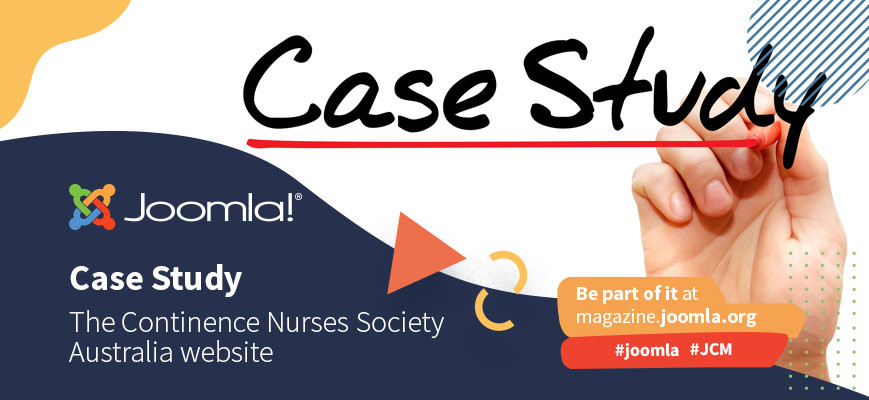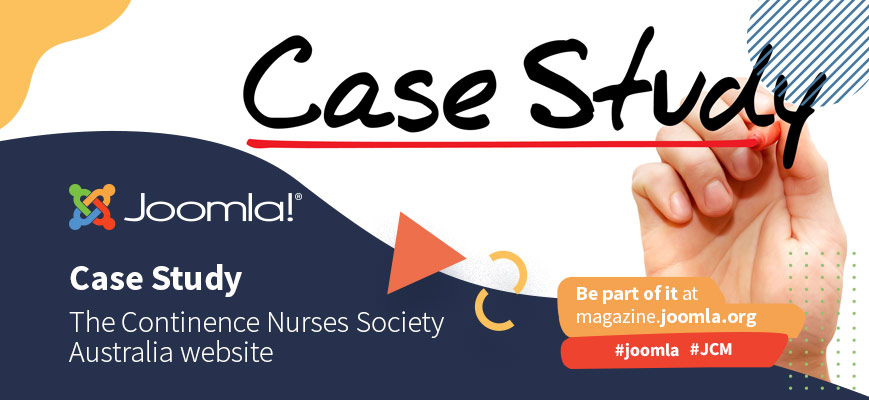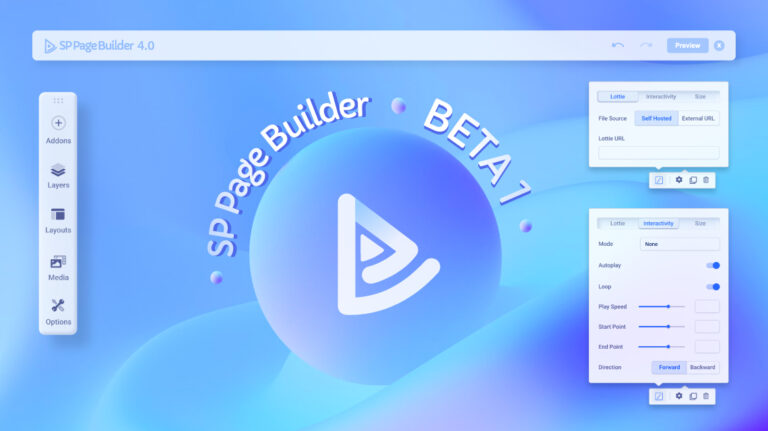
In this issue, we’ll feature a Case Study of a website built with Joomla, coming from Australia.
Introduction
The Continence Nurses Society Australia (CoNSA) is a non-profit group of nurses with a special interest in bowel and bladder health issues, and one of several similar organisations around the globe. CoNSA has a membership of about 300 nurses across Australia and derives much of its income from membership fees and attendance fees at education events. CoNSA members are located across Australia, many working independently and in remote and regional areas. We need a website that can serve as the major point of communication with members and present CoNSA well on the national and world stage. The website also needs to serve the increasingly sophisticated interests of our members and their organisation.
History
CoNSA has had a previous website. This was written by a contact known to committee members, who wrote websites professionally with proprietary software. At the time, this was exciting development in that the website provided CoNSA with an online presence that we hadn’t had before. However, the type and functionality of the website was limited by the lack of funding available for development and ongoing maintenance, and the lack of skills of the CoNSA committee members.
I was appointed to the Communications sub-committee and was responsible for website maintenance. This was a limited role – limited by my knowledge of both the role and the software, by the permissions and instructions I was given, the support or documentation I had access to, and the software itself.
The limitations were frustrating. For example, the page size on the most recent website seemed to be set. When we had more content than the relevant page could accommodate, the options were to delete other content which may have been still current or squeeze this new content into somewhere else on the website – somewhere where it could go, not necessarily where it should go. There were significant limitations in creation of new pages, menus and submenus. The site became increasingly disorganised and less coherent.
The website was not attracting hits, was not being used, and had a poor profile on the digital stage. It came to be of limited use to CoNSA members who found it increasingly difficult to find the information they needed quickly.
Process
I wanted something better than CoNSA’s previous website.
I made my concerns known to others in the CoNSA committee. Amongst other things, I complained about the software, and spoke about the benefits of public domain software. I had a vision of a website that CoNSA could more fully ‘own’, a website that gave us more independent control, and could be more easily and promptly manipulated and developed to meet current and future needs.
When I found myself happily less employed, I had the opportunity to pursue my interest in a better website and got the go-ahead from my colleagues to pursue this.
Not knowing any better and having no direct contacts in the website creation industry, I turned to the internet to investigate the options, and approached the pursuit from a few different angles. I looked at websites from special interest nursing groups in Australia, found some that I liked, and thought about the functionality in these sites that would suit CoNSA.
I put together a ‘wish list’ of features, read what I could about comparisons between the major content management systems, and the relative strengths and weaknesses between them. Joomla caught my eye. It seemed that learning how to use it was achievable. It appeared to be substantial software, with more than enough functionality for our purposes. There was a community of support around the globe.
There were other CMS (content management systems) contenders – predominantly WordPress, and Drupal. Drupal was reported as requiring significant capacity in coding, which I do not have, so Drupal was easily eliminated from the short list. Choosing between Joomla and WordPress was not so easy. Some things that attracted me to Joomla were:
- Heritage: Although both Joomla and WordPress currently are demonstrably competent at building websites, WordPress began as a blogging platform. Joomla began as a means of building websites, which is more aligned to my needs.
- Ease of use: Joomla is regarded as being accessible to beginners, but having a steeper learning curve. I regarded myself as having some technical ability. I felt that I could manage that curve, and looked forward to developing some level of skill in website creation and management. Joyfully, I have engaged a ‘website mechanic’ (his words!) who is happy to assist me in learning (and a great deal besides).
- Security: This was an important factor for me. I didn’t want a site to be hacked on my watch. Initially, I favoured Joomla, as WordPress seemed disproportionately hacked relative to its prevalence. However, the more I read, the more I appreciate there is more to the story of security than choice of CMS alone, and that website administration is an important factor. It seems that any difference in security is not readily attributed to the structure of the software, and the very superficial judgment I made on security (in Joomla’s favour) is arguable, and there may be no clear ‘winner’. But I was left with a sense of confidence in Joomla’s inherent security.
- Flexibility: A couple of Joomla features were appealing – the multi-language capability, and the capacity to accommodate different templates within one website. I am yet to use these, but the flexibility was appealing.
- Things that really shouldn’t make any difference: I like the look of Joomla’s logo, and the sound of the name.
I found a series of tutorial guides for beginners, worked my way through them, and constructed a basic website on my laptop. I needed someone who could take my vision to reality. In my case, I did this through the local Joomla Users Group, but there is a facility on the Joomla Australia website for this that might suit more people. With the right person to guide me, the journey became more focused and productive. But that’s another story. This piece is about making the choice to use Joomla.
CoNSA now has an attractive, responsive and useful website (CoNSA.org.au) that can be built on, and serve the organisation into the future. I have learned something about writing a website (and to appreciate the craft of someone who really knows what they are doing!), negotiated with the CoNSA committee along the way about shaping and implementing a website the organisation can be proud of, had glimpses into the international Joomla community, and been welcomed by the people of Joomla Australia over Joomla Users Group videos.
Joomla has lived up to my expectations. It’s been a rewarding journey, and my choice, though made tentatively, has been vindicated. I’m glad I chose Joomla!






![[Update] 90+ Joomla products updated for Joomla 5.1 and Joomla 4.4.4](https://offerpalmedia.com/wp-content/uploads/2024/05/update-90-joomla-products-updated-for-joomla-5-1-and-joomla-4-4-4.jpg)